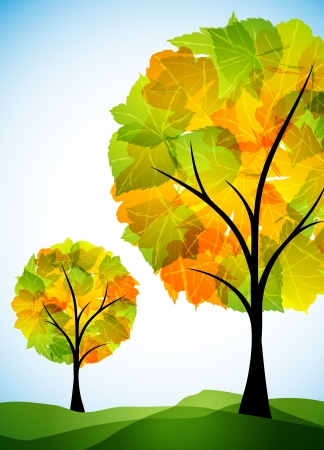1. Introduction: The Art of Edible Landscaping
Across the United States, a new wave in landscape design is blossoming—one that harmoniously blends ornamental beauty with edible abundance. This contemporary approach, known as edible landscaping, gracefully weaves together the visual appeal of traditional gardens with the practicality of homegrown harvests. By thoughtfully integrating fruit trees, vibrant vegetables, and aromatic herbs into front yards and backyard retreats, homeowners are transforming their outdoor spaces into living tapestries that delight the senses year-round. As this trend gains momentum, Americans are discovering that a well-designed landscape can be both stunningly beautiful and refreshingly productive, redefining curb appeal while encouraging a deeper connection to nature and seasonal rhythms. In this article, we celebrate how ornamental edibles offer endless opportunities for creative expression—elevating gardens beyond aesthetics and cultivating a lifestyle rooted in sustainability and joy.
Design Principles: Creating Harmony Between Form and Function
Achieving a seamless balance between ornamental beauty and edible productivity begins with thoughtful landscape design. By integrating both form and function, you can create outdoor spaces that are visually captivating while offering year-round harvests. The key is to use design principles that emphasize structure, color, and texture—elements that anchor your gardens aesthetic appeal and enhance its practical yield.
Structure: Foundation for Visual Flow
Start by establishing the garden’s framework. Consider raised beds, espaliered fruit trees, or geometric planting layouts to define space and guide movement. Structural plants such as dwarf apple trees, blueberry hedges, or trellised beans serve dual purposes: they provide architectural interest while delivering seasonal produce.
| Structural Element | Ornamental Value | Edible Benefit |
|---|---|---|
| Espaliered Fruit Trees | Sculptural lines, living fences | Apples, pears, peaches |
| Raised Beds with Brick Edging | Crisp borders, layered heights | Versatile for annual veggies & herbs |
| Pergolas & Arbors | Vertical interest, shaded retreats | Grapes, hardy kiwis, passionfruit |
Color: Year-Round Visual Impact
The palette of edible landscapes can rival any ornamental garden. Interplant vibrant Swiss chard with deep purple basil or let golden nasturtiums spill alongside green kale. Plan for succession so color emerges in every season—from spring strawberries to autumn pumpkins. Think about foliage hues as well; purple cabbage or variegated sage add depth even after blooms fade.
Seasonal Color Guide for Ornamental Edibles:
| Season | Edible Plant Options | Main Color Attributes |
|---|---|---|
| Spring | Lettuce mixes, chives in bloom, strawberries | Pale greens, pinks, reds |
| Summer | Tomatoes, eggplants, calendula flowers | Burgundy, orange, yellow |
| Fall/Winter | Kale, rainbow chard, decorative cabbages | Purple, blue-green, silver-white veins |
Texture: Layering for Depth and Interest
A successful edible landscape feels lush and inviting thanks to careful textural layering. Mix fine-leaved carrots with bold-leaved rhubarb or feathery dill against glossy pepper plants. Vary plant heights and leaf shapes to keep the eye moving throughout the space—a principle borrowed from classic American perennial borders.
Merging Aesthetics and Productivity in Every Zone
No matter your climate or yard size, focusing on structure, color, and texture will transform your garden into a living work of art that’s as bountiful as it is beautiful. Thoughtful placement and creative combinations ensure every corner thrives with purpose and visual delight.

3. Top Ornamental Edible Plants for Year-Round Interest
Creating a landscape that is both beautiful and bountiful means selecting edible plants that shine through every season. The American garden is rich with options, from native showstoppers to beloved heritage varieties, each offering visual intrigue alongside harvests for the table. Here are standout choices that embody the perfect blend of ornamental flair and practical productivity:
Spring: Bursting into Color and Flavor
Redbud Trees (Cercis canadensis)
Native to much of the U.S., redbuds dazzle in early spring with vibrant magenta blooms. Their young flowers are not only edible but add a tangy, crisp garnish to salads or baked goods.
Violas and Pansies
These cheerful annuals brighten borders and containers, while their petals offer subtle sweetness for decorating cakes and salads.
Summer: Lush Growth and Vibrant Harvests
Blueberry Bushes (Vaccinium spp.)
Their glossy green foliage turns fiery red come fall, and summer brings clusters of juicy berries. Compact cultivars work beautifully in foundation plantings or mixed borders.
Swiss Chard ‘Bright Lights’
With its neon stalks in hues of pink, yellow, and orange, this leafy green is as striking as any flower—and yields nutritious leaves all season long.
Fall: Fiery Foliage and Late Harvests
American Persimmon (Diospyros virginiana)
A native tree boasting glowing orange fruit amid golden autumn leaves. Its sweet persimmons extend the harvest well past frost.
Kale ‘Redbor’ and ‘Lacinato’
Ornamental yet hearty, these kales provide ruffled texture and rich color even as temperatures drop—plus delicious greens for fall meals.
Winter: Structure, Texture, and Subtle Beauty
Sage (Salvia officinalis)
Sage’s silvery leaves bring year-round texture to beds and borders. Hardy through winter in many regions, it offers aromatic sprigs for winter roasts or teas.
Winterberry Holly (Ilex verticillata)
This native shrub drops its leaves to reveal brilliant red berries that persist into winter—an ornamental feast for both eyes and birds, though not for humans!
Heritage Varieties for Local Character
Incorporating heirloom beans, corn, or apple trees unique to your region adds a meaningful sense of place while supporting local biodiversity. Seek out varieties like Arkansas Black apples or Cherokee Trail of Tears beans for stories as rich as their flavors.
A Living Tapestry All Year Long
The true magic lies in weaving together these versatile edible plants so your landscape offers evolving beauty—from spring’s first blooms to winter’s enduring structure—while providing a steady stream of homegrown delights for your kitchen.
4. Seasonal Planting and Care Tips
Creating a landscape that flourishes with ornamental edibles year-round requires thoughtful planning and attentive care. By understanding seasonal cycles and your region’s unique climate, you can design a garden that is both beautiful and productive through every season.
Understanding Your USDA Hardiness Zone
Before choosing plants, determine your USDA hardiness zone. This knowledge helps you select varieties that will thrive in your local conditions, ensuring consistent beauty and harvests.
| Region | Suggested Ornamental Edibles | Key Considerations |
|---|---|---|
| Northeast & Midwest (Zones 4-6) | Kale, Swiss chard, blueberries, serviceberries | Cold-hardy selections; mulch to protect roots in winter |
| Southeast (Zones 7-9) | Okra, figs, rosemary, sweet potatoes | Heat-tolerant plants; provide afternoon shade in summer |
| West Coast & Pacific Northwest (Zones 7-10) | Artichokes, strawberries, nasturtiums, citrus trees | Well-drained soil; monitor for excess rainfall or drought |
| Southwest (Zones 8-11) | Pomegranates, peppers, lavender, prickly pear cactus | Drought-resistant varieties; consider water-wise designs |
Arranging for Year-Round Interest
Combine plants with staggered bloom times and harvest periods. For example, pair spring-flowering chives and edible tulips with summer-producing tomatoes and peppers. Incorporate evergreens like rosemary or bay laurel for winter structure and color.
Maintenance Strategies by Season
- Spring: Prune dormant shrubs, refresh mulch, direct-sow cool-season crops.
- Summer: Water deeply in the morning, deadhead spent blooms, monitor for pests.
- Fall: Plant garlic and overwintering greens, clear fallen leaves, add compost.
- Winter: Protect tender perennials with row covers or burlap; plan next year’s arrangements.
Regional Tips for Continuous Appeal
If you’re gardening in the South or Southwest, use raised beds and drip irrigation to combat heat stress. In northern climates, try cold frames or hoop houses to extend your growing season. For coastal regions with mild winters, take advantage of year-round leafy greens and herbs.
5. Incorporating Edibles Into Existing Landscapes
Blending edible plants into your established landscape is a creative way to marry beauty with bounty, especially when mindful of neighborhood aesthetics and local regulations. With thoughtful choices, you can enjoy a harvest of fresh produce without sacrificing curb appeal or harmony with your community.
Front Yards: Subtle Integration for Street-Side Charm
Transforming front yards into productive yet ornamental spaces starts with careful plant selection. Opt for edible varieties known for their attractive foliage or blooms—think purple basil, rainbow chard, or kale with crinkled blue-green leaves. Interplant these among traditional shrubs and perennials to create a tapestry of color and texture that blends seamlessly with classic landscape design. Low-growing herbs like thyme or oregano make excellent edging plants, softening walkways while offering culinary rewards. To stay code-compliant, avoid tall crops or sprawling vines that could obstruct sightlines or encroach onto sidewalks.
Borders: Layering Function and Beauty
Borders are perfect places to tuck in edibles without disrupting the overall garden structure. Use dwarf fruit bushes such as blueberries or currants as foundation plantings—these provide spring blossoms, summer berries, and vibrant fall color. Tall, upright vegetables like okra or asparagus can act as living backdrops, while clumps of garlic or alliums offer architectural interest at the border’s edge. Mixing annuals and perennials ensures year-round visual intrigue and an ongoing edible harvest.
Patio Containers: Versatile and Mobile Solutions
Containers offer flexibility for integrating edibles where ground planting isn’t practical—or where HOA guidelines limit permanent changes. Choose decorative pots that complement your home’s style, filling them with compact tomatoes, peppers, or trailing strawberries. Herbs like rosemary, sage, and mint thrive in pots and provide easy access from kitchen to table. Move containers seasonally to maximize sun exposure and refresh patio aesthetics; swap out cool-weather crops for heat-lovers as the seasons change.
Respecting Local Codes and Neighborhood Preferences
Before planting, check city ordinances and HOA rules regarding front yard gardens and visible edible plantings. Favor neat, well-maintained beds with clear boundaries—mulch pathways, prune regularly, and remove spent plants promptly to ensure a tidy appearance appreciated by neighbors. Consider sharing excess produce or inviting neighbors to sample your harvest; this fosters goodwill and demonstrates how ornamental edibles can enrich the entire community.
Embracing Edible Elegance Year-Round
By thoughtfully incorporating edibles into existing landscapes—front yards, borders, and patio containers—you create outdoor spaces that celebrate both beauty and productivity in every season. Let each planting choice reflect both your aesthetic vision and your love of homegrown abundance.
6. Benefits Beyond the Garden: Community and Environmental Impact
Ornamental edibles offer far more than personal enjoyment—they serve as catalysts for positive change in neighborhoods and local ecosystems. Integrating edible plants with aesthetic appeal, such as rainbow chard borders or flowering herb spirals, supports pollinator populations by providing year-round nectar sources. These vibrant plantings become a haven for bees, butterflies, and hummingbirds, strengthening urban biodiversity and contributing to the resilience of local food webs.
Beyond their environmental benefits, ornamental edibles foster community engagement. Gardens that blend beauty and productivity naturally invite conversation and connection among neighbors. Whether it’s sharing surplus harvests, exchanging gardening tips, or hosting seasonal gatherings, these spaces cultivate a sense of pride and stewardship. Community gardens featuring edible ornamentals often become educational hubs where children and adults alike can learn about sustainable practices, nutrition, and the rhythms of nature in a hands-on setting.
The commitment to growing attractive yet useful plants is a step toward sustainable living. Ornamental edibles reduce the need for resource-intensive lawns, minimize chemical inputs by supporting beneficial insects, and encourage homegrown food production. This approach aligns with American values of self-sufficiency and environmental responsibility, inspiring others to reimagine their landscapes as both beautiful sanctuaries and productive spaces. In this way, cultivating ornamental edibles shapes not only our gardens but also healthier communities and a more sustainable future.


